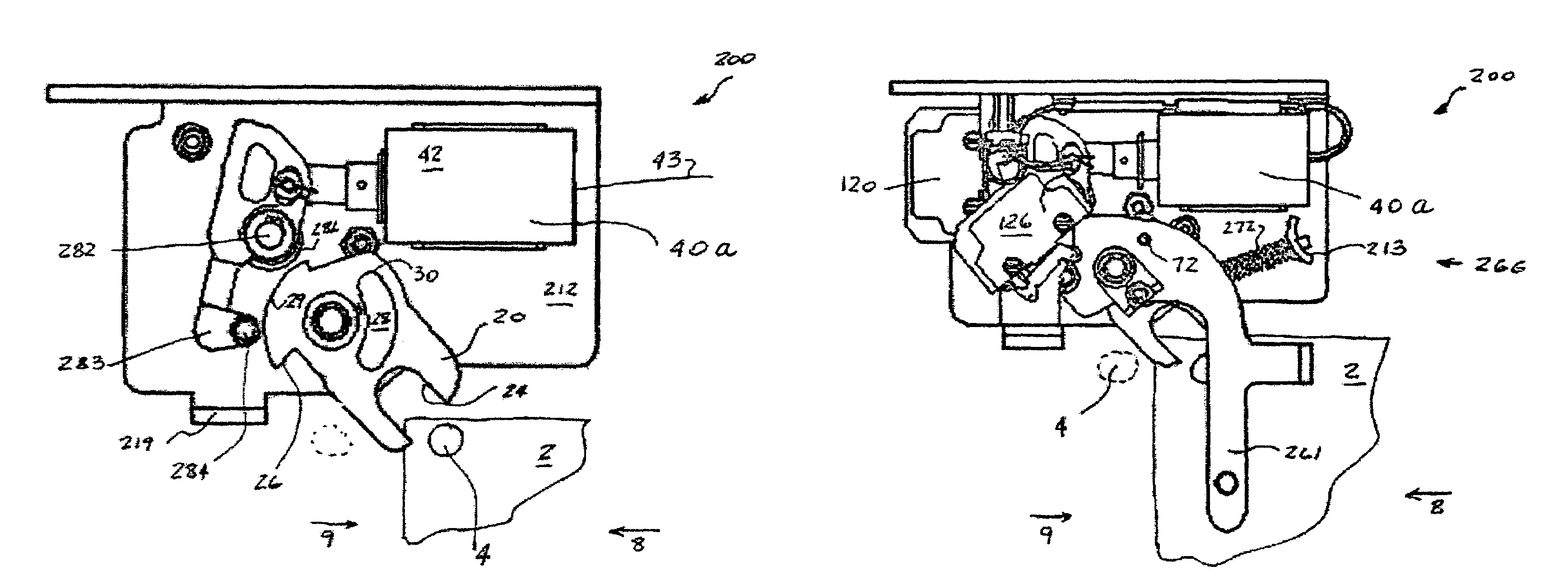Lock assembly
a technology for locking mechanisms and doors, applied in the field of locking mechanisms, can solve the problems of excessive machining and adjustment requirements, high stress on sprag biasing means, inconvenience for passengers and operation schedule delays, etc., and achieve the effect of increasing the reliability of operation
- Summary
- Abstract
- Description
- Claims
- Application Information
AI Technical Summary
Benefits of technology
Problems solved by technology
Method used
Image
Examples
Embodiment Construction
, particularly, when the detailed description is taken in conjunction with the attached drawing figures and with the appended claims.
BRIEF DESCRIPTION OF THE DRAWINGS
[0026]FIG. 1 is a plan view of a prior art lock mechanism particularly showing the lock cam engaging the locking element on the door as the door is in a locked position;
[0027]FIG. 2 is a plan view of the prior art lock mechanism illustrated in FIG. 1 showing a manual release lever in a fully rotated position enabling manual unlocking of the door;
[0028]FIG. 3 is a plan view of a lock mechanism of a first embodiment of the present invention, particularly showing the lock cam engaging the locking element on the door in a locked position;
[0029]FIG. 4 is a a plan view of the lock mechanism of the present invention of FIG. 3, particularly showing the lock cam and the locking element in an unlocked position;
[0030]FIG. 5 is a plan view of the lock mechanism of the present invention particularly showing a manual release lever in...
PUM
 Login to View More
Login to View More Abstract
Description
Claims
Application Information
 Login to View More
Login to View More - R&D
- Intellectual Property
- Life Sciences
- Materials
- Tech Scout
- Unparalleled Data Quality
- Higher Quality Content
- 60% Fewer Hallucinations
Browse by: Latest US Patents, China's latest patents, Technical Efficacy Thesaurus, Application Domain, Technology Topic, Popular Technical Reports.
© 2025 PatSnap. All rights reserved.Legal|Privacy policy|Modern Slavery Act Transparency Statement|Sitemap|About US| Contact US: help@patsnap.com



